Claude Monet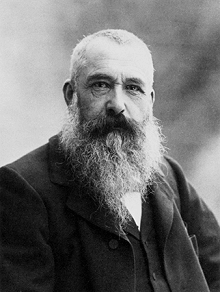
Oscar-Claude Monet was a French artist who mainly gained popularity as the originator, pioneer and unwavering promoter of an Artistic field. Monet was born on November 14, 1840, in Paris, France, and died on December 5, 1926, in Giverny. His fame skyrocketed in the latter part of the twentieth century, as the paintings featured in museums and galleries drew career-high audiences and advertised highly popular things. Monet grew up and educated in the "Le Havre" city and developed his strong love for the environment and painting. His mom, Louise-Justine Aubrée Monet, encouraged Monet to seek a profession as an artist, but his dad, Claude-Adolphe, did not support this approach. Monet's previous influences, which included sceneries, coastlines, drawings and paintings, drew much notice from people. Eugène Boudin, who exposed him to the idea of Plein air paintings, had a potentially major impact. Monet resided in Giverny, France, where Monet purchased a residential area and started a massive beautification work that included a water-lily basin. Monet's desire to preserve the French scenery inspired him to draw almost the same picture multiple times in order to depict the shifting weather and seasonality. Monet became prominent among the world's foremost paintings and a good role model for new generations of artists. Childhood and Early DaysMonte's father, who was a retail dealer, desired Claude joins the family's 'cargo vessel and groceries' company, while Claude desired to be a painter. Monet's mom used to be a musician who encouraged him to pursue a profession in painting. Monte was an inattentive kid who, following demonstrating artistic ability from a young era, started painting cartoons and sketches of friends and other people for cash just at the age of fifteen. Throughout those formative days, Monte additionally completed pencil illustrations of sailboats that were virtually precise in their clarity of description. Monte's aunt, Marie-Jeanne Lecadre, had been an enthusiastic illustrator, and Monte may have gone to learn painting with only a fellow artist on her advice. This helped establish the course for Monet, who then spent the next six decades focusing on visual occurrences, including developing constructive means of transforming sight into colour. Monet went to Le Havre in 1862, possibly due to medical reasons, drew water alongside Boudin and met the Dutch maritime artist Johan Jongkind. First Impressionist Drawing or Painting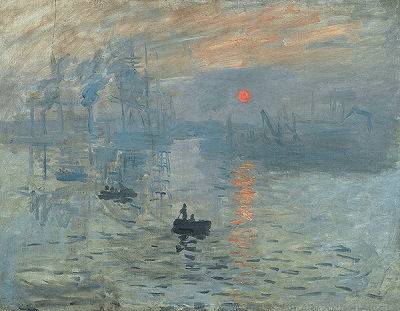
Monet's existence remained unstable as well as migratory. Although, during the 19th century, Monet managed to sell just about nothing, however, many pieces were selected for show throughout the annual Salons. Overall, it helped him with tremendous results. Additionally, people also liked a superb but unfinished Impressionism painting of his future spouse, Camille. They drew quick sketches of gratification and waders, small boats floating with in forefront, and sparkling lights in the flowing waves on remarkably similar paintings. Later ImpressionismMonet's famous technique of drawing or painting in succession, all reflecting similar topics in varied lighting and climate regions, wasn't fully executed until around the late 1800s. Monet's lifestyle became quite cheerful when Monet relocated near Vétheuil, which was further away from Paris. In 1876, Monet started communicating with Alice Hoschedé, the spouse of a dept shopkeeper and connoisseur. MethodsMonet was interested in the phenomena of lighting, so while creating en Plein air (aka Plein air painting), Monet felt that his single virtue would have been to work right across from the environment, attempting to depict the perceptions of the most transitory phenomena. Monet made sunlight the main subject of all his artworks. He wanted to show that daylight changed colour as well as the perspective of existence. To catch the complexities, he might occasionally finish a drawing for one session with hardly any preparation. Monet used pencil sketches to swiftly sketch ideas & themes for further research. He was especially attracted to enriched environments and city settings, so he preferred to portray floral landscapes, parklands, and forests. By depicting characters and environments together, Monet wanted the scenery to be not just a framework but for people to overwhelm the overall scene. Monet devoted itself to the pursuit of fresh and enhanced means of artistic expression. To that goal, like a young fellow, he went to the Salon and became acquainted with masterpieces by elderly artists and acquaintances with some other new artists. Travel to ParisClaude Monet spent many hours within Louvre in Paris between their teenage years and early twenties, when he encountered modern artists, including Edouard Manet, who'd eventually establish partners. Monet loved to draw whatever he saw through the glass from the art museum. Study with CharlesClaude returned to Paris to work there in the separate office of legendary artist Charles Gleyre. Monet shared a workshop alongside Pierre-Auguste Renoir, Frederique Bazille, and Alfred Sisley, each of which would influence the development of painting. The youngsters could frequently take the canvases and try to paint outside what they capture the first views of the such environment on canvases. The earlier artwork was approved for display at the famous Shop de Paris. The artwork was predominantly within Realistic portrayal, without the vivid colour blending as well as the spontaneity that'd characterise his older work. Stylish DevelopmentMonet's paintings went into simplification throughout the intermediate era of the painting evolution, yet his themes remained recognisable for the greatest half. He worked using pigment to add different shades to the canvas's body as well as deeper dimensions of colour. From 1901 to 1926Monet and Alice relocated with their family members towards the town of Giverny, wherein he purchased a residence and land. Monet began construction on a personal sanctuary within which he would paint many of his greatest well-known paintings during the closing years of his existence. Monet later said that the Giverny Grounds was perhaps the most important site of his artwork. Foreign LandClaude Monet made a sequence about the Parliamentary Houses within Westminster Parliamentary Building rising out from mist or towering above daylight lakes at sundown throughout their journeys, especially during the first decades of the century (20th century). Throughout the 20th century, Monet also toured both the Mediterranean world and Madrid. Popular Paintings by Claude MonetImpression Sunrise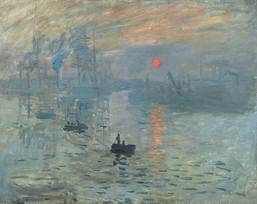
Dawn, a well-known artwork by Monet, is inspired by sight on the coast of Le Havre. Claude showed a fog that creates a foggy backdrop for the picture, which is located on a French bay. The tiny sailboats at the front are seemingly driven through the motion of the flowing water in this powerful and frank painting. Monet's Dawn attracted much interest, as well as several people reported that they had been completely able to distinguish whatever was displayed. The picture deviates from Monet's art of both the time and Impressionist, generally sometimes in respects. However, it lacks typical Impressionism handling of vibrant colours. Water Lilies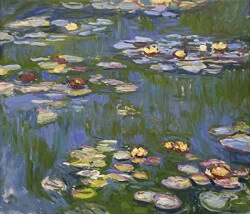
Water Lilies (flower) is the title of a collection of drawings, not a particular picture. Monet returned to this subject multiple times throughout his career, creating over 200 water lily pictures from different angles. He omits all depiction of such landscape or clouds, instead focusing on its projection within the sea. Such artworks are classic, having plants merely appear as a shadow. After Monet lost his dear spouse Alice, he then returned back to work on the water lilies drawings. He changed his method dramatically, specifically the size of such painting canvas. He (Monet) additionally altered the colour combination and employed bright splashes of colour to evoke blossoms. His avant-garde style and his exceptional utilisation of figure and colour paved the way for future artistic trends. Flowers paved the way for visual expressionism. Even by the moment, Monet died in 1926, the art industry, including both France and the US, had changed dramatically from the model as Monet had also fought to promote artwork for most of his entire career. Magpie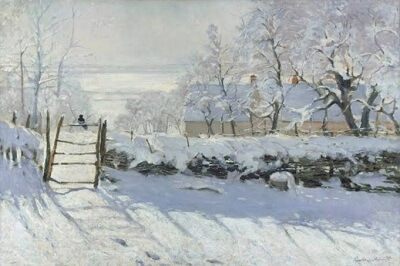
Monet's patron assisted with the arrangement of a property in Étretat to his (Claude Monet) fiancée Camille. Gustave Courbet's expertise in snowy sceneries led to the creation of this magnificent snowy landscape. Monet's work was focused on the basic motif of some kind of solitary magpie resting on a fence. Throughout the gorgeous nature background, the little bird perches contemplatively. Poppie Field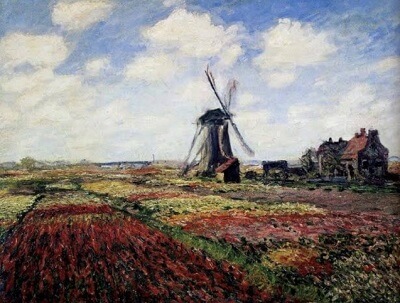
Monet obtained a rental contract on a property in Giverny and remained until he died in 1926. Monet's home and lawn, which he had carefully choreographed and built, would ultimately constitute his universe. The artwork was particularly drawn to the disciplines of poppies, with their vivid colours coating the countryside in a mossy changing colour. Monet drew poppy fields hundreds of times, and then in Grassy Meadow, 1887, the realistic picture creates amazing motion rushing across the panel because flower petals seem to swing and vibrate like in the wind. Tulip Field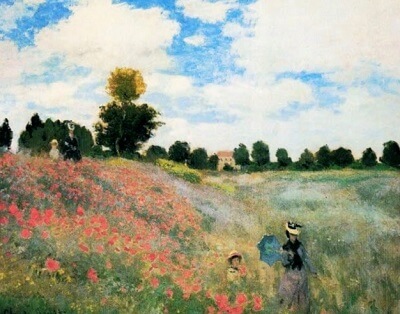
Monet stayed a few days in Holland for new creative paintings, marvelling somewhere at massive areas with tulips and flowers that extended beyond what the sight had seen. Acres of tulips weren't a new campaign for the painter, but he hadn't seemed to have the chance to depict two equally opposed aspects, the organic tulips growing in a structured manner and personal style together. These meadows had often surrounded by cord streams, the dazzling colours of the flowers being vividly mirrored within their waterways. The picture surely drew Van Gogh's notice and then significantly impacted later artworks accordingly. Women in the Garden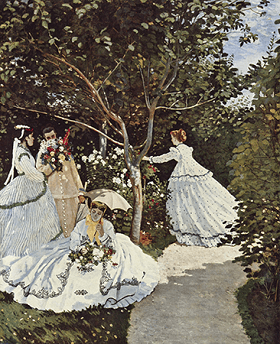
Around 1866, Monet commenced a huge artwork on the lawn of the villa that Monet rented in the Paris district. The artwork became so large that a rope mechanism and a hole were needed in which the artwork could just be balanced on the roller. The goal of that kind of piece would have been to establish that people inside an environment would create the illusion that wind and brightness were moving about them. He structured this by drawing reflections and rays using specific colours. Monet brilliantly and effectively represented pure white garments, securely fixing it throughout the composition's framework, a melody of greenish brown supplied mostly by the main plant as well as the road. Sunflower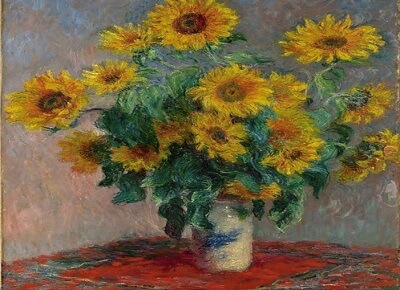
The 7th personator show featured Monet's Sunflowers. The flowers that make up this scene were reportedly sourced from Monet's field in Vetheuil, as well as the artwork was highly praised by the public. His work depicted every single sunflower in considerably greater depth and precision. However, Monet concentrated just on the ensemble in its entirety. Facts
Next TopicErnest Hemingway
|
 For Videos Join Our Youtube Channel: Join Now
For Videos Join Our Youtube Channel: Join Now
Feedback
- Send your Feedback to [email protected]
Help Others, Please Share









